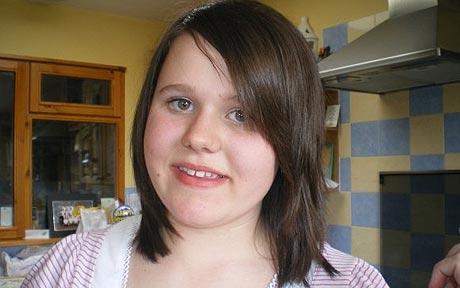Feet surgery
[media id=25 width=500 height=400]
The podiatric surgeon is taught to approach foot surgery by keeping the knowledge of normal foot function and biomechanics in mind. Because of the weightbearing nature of the foot, surgical procedures must be designed to be as stable as possible to withstand the forces of everyday standing and walking. Care is taken to understand the cause of the problem so as to provide a long-lasting cure, when possible. Greater than 99% of podiatric surgery is done in an outpatient setting such as a hospital outpatient department, a freestanding surgery center or in the podiatry office. Most procedures allow for immediate walking with a surgical sandal. Some procedures may require the use of a cane, crutches, or a cast. Specific surgical treatments for many common (and some less common) foot conditions will be discussed.
Surgery for flat feet is generally reserved for the most symptomatic cases. Orthotics are often the first line course of treatment. Many people have what are referred to as “Flat Feet” but are relatively asymptomatic. Flat feet may result in significant foot pain and deformity because of excessive pronation which causes joint instability. Flat foot procedures are designed to provide for a more stable foot which pronates less. Most flat foot surgery is performed on patients in the adolescent age group. There are a large variety of specific surgical procedures that may be used. They may be grouped according to the region of the foot that is treated. Often, 2 or 3 procedures may be performed together from the different groups.
Rearfoot osteotomies
These are procedures which are designed to change the position of the heel into an inverted or supinated position (the opposite of everted and pronated which are found in flat feet.) An osteotomy is a surgical cut in the bone. Often, a wedge of bone is removed to change the angle of the heel bone (calcaneus). Other procedures are transpositional and involve sliding of one part of the bone along the other part of the bone. (E.g. the Koutsogianis procedure). Other procedures involve adding a bone graft and opening the wedge to change the angle of the calcaneus.( E.g. the Evans Procedure). These osteotomies are generally held together with special screws, pins or bone staples and require a period of casting and immobilization for several weeks.Medial column stabilizations
These procedures involve fusing two or more of the bones along the medial side (inner side) of the foot. Common fusion sites are the navicular and medial cuneiform. These bones have often dropped in a flat foot and fusing them provides more stability. These osteotomies are generally held together with special screws, pins or bone staples and require a period of casting and immobilization for several weeks.Tendon transfers
Sometimes the insertion sites of tendons are detached and then reattached to bones at different locations. The result is a dynamic stabilization. Repositioning of the tendons allows the muscles that pull them to exert their force in a more beneficial way to help support the arch. The Young tenosuspension procedure reattaches the Tibialis Anterior tendon to a better position beneath the medial arch where it can pull up on the arch to support it.Tendon lengthening
Often, the Achilles tendon is tight and is a major deforming force contributing to flat foot conditions. A condition associated with a tight Achilles tendon is known as equinus. An Achilles tendon lengthening procedure is often effective at reducing this deforming force. The calf is made up of 2 gastrocnemius muscle bellies as well as the soleus muscle. The Achilles tendon attaches to all three. An Achilles tendon lengthening lengthens the whole group together. Sometimes, the gastrocnemius muscles are tight while the soleus is not. In this case, a gastrocnemius recession can be performed to lengthen only the gastrocnemius while leaving the soleus alone.Arthroeresis
These are procedures in which a peg made of plastic or titanium is placed in front of a bone to limit its motion. A common location for placement of such a device is the Sinus Tarsi which is a cone-shaped space between the talus and calcaneus bones. The peg helps to limit pronation. This is often just a temporary measure with the peg left in for a few years and then removed.Arthrodeses
An arthrodesis is a fusion of two bones. In addition to the medial column stabilization fusions discussed above, rearfoot bones may also be fused. Rearfoot fusions are generally reserved for the most severely deformed, arthritic and painful feet . A Triple Arthrodesis is a fusion of the Talo-calcaneal, Talo-navicular and Calcaneo-cuboid joints. This is one of the most complex foot surgeries performed since all three joints must be aligned and fused properly to achieve a satisfactory result. In addition, because motion in the rearfoot is eliminated, the ankle joint and other joints in the foot may be forced into compensating to provide additional motion which could result in future symptoms in those places. These fusions are generally held together with special screws, pins or bone staples and require a period of casting and immobilization for two or three months.
Feet surgery , Feet surgery Health, Feet surgery Health Latest, Feet surgery Health Information, Feet surgery Health information, Feet surgery Health Photo,Feet surgery Health photo, Feet surgery Health Latest, Feet surgery Health latest, Feet surgery Health Story, Healthy Minnesota Health story, Feet surgery Video, Feet surgery video, Feet surgery Health History, Feet surgery Health history, Feet surgery over Picture, history, Feet surgery Asia, Healthy Minnesota asia, Feet surgery Gallery, Feet surgery gallery, Feet surgery Photo Gallery, Healthy Minnesota photo gallery, Feet surgery Picture, Feet surgery picture, Feet surgery Web, Malaysia Health, web Health, picture, video photo, video surgery, gallery, laparoscopy, virus, flu, drug, video, Health Health, photo, nutrition, health video, symptoms, cancer, medical, beating, diet, organic, weightloss, surgery, fitness, operation, bf1, feet, surgery, blood, blister



